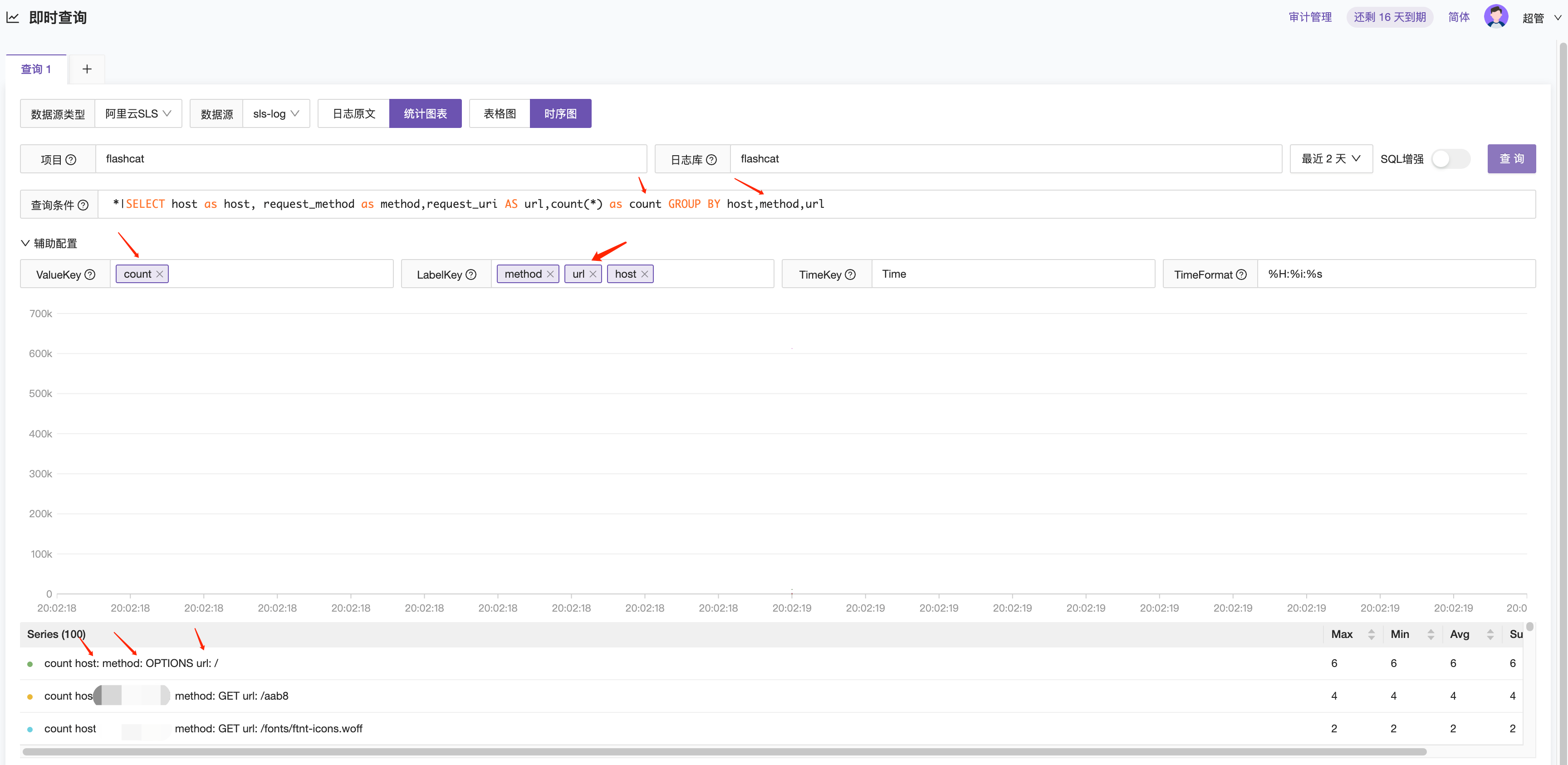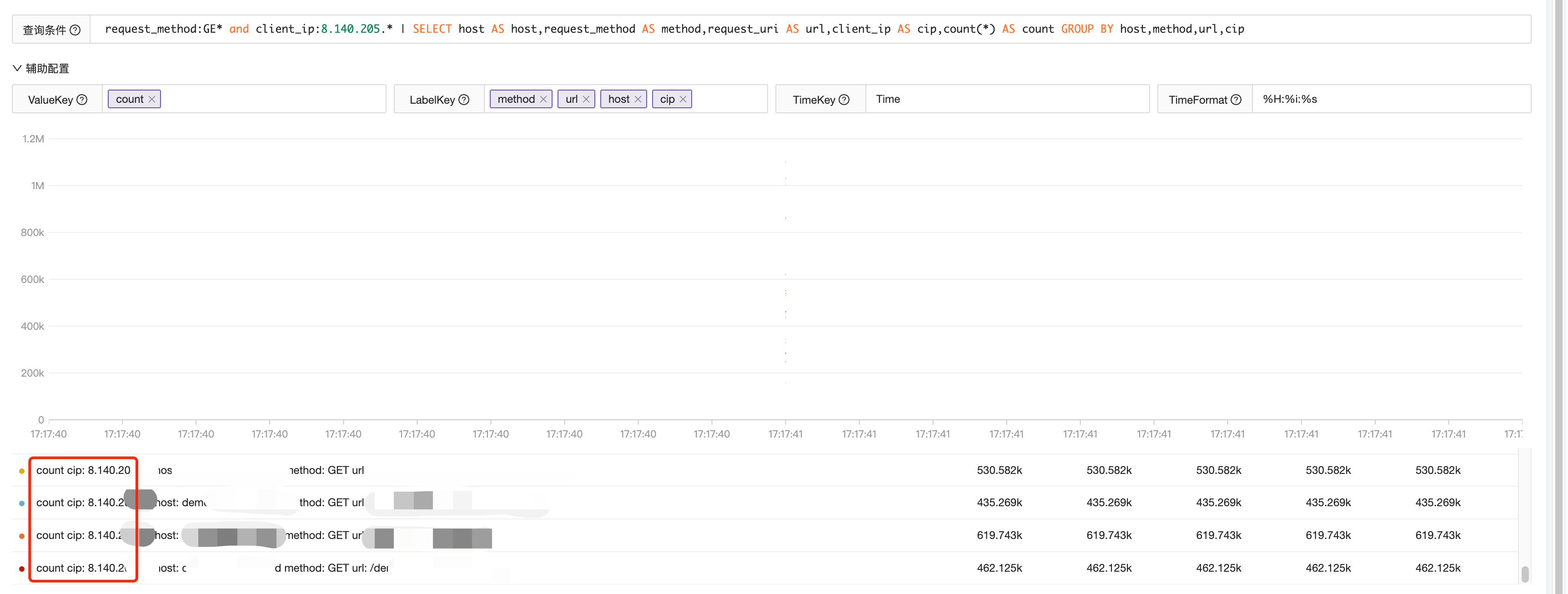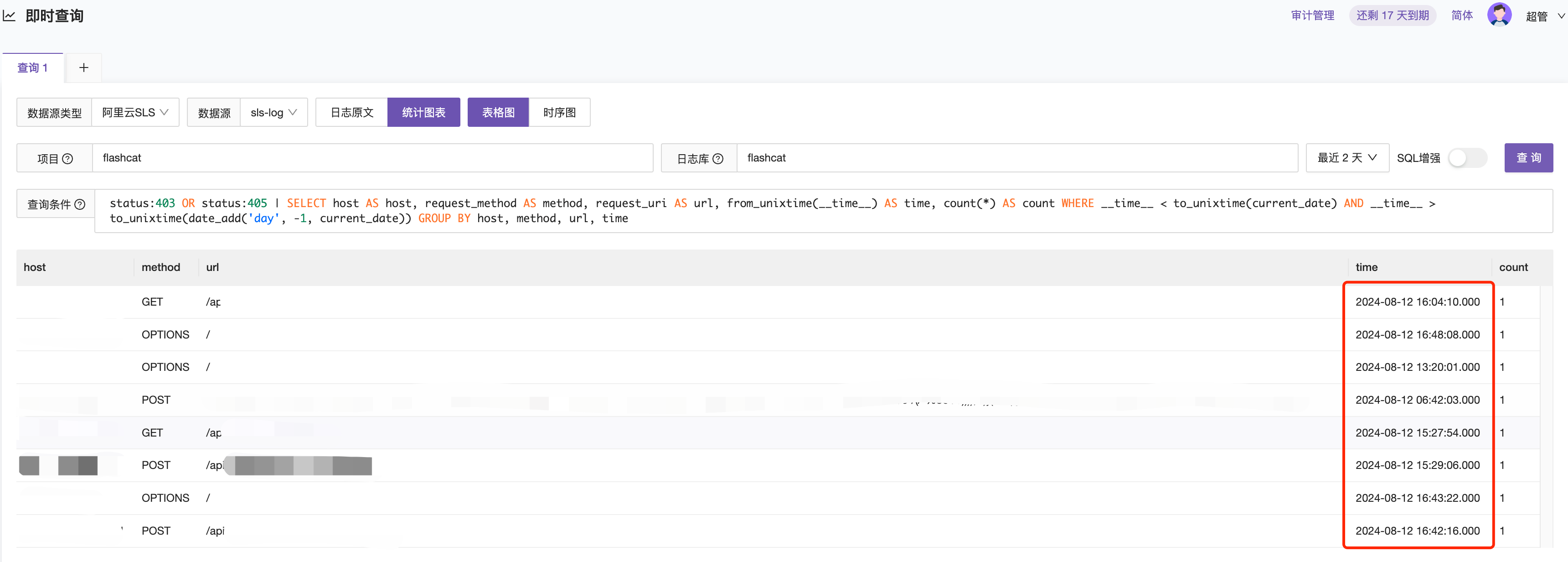
















In log analysis, select Real-time Query, choose Alibaba Cloud SLS as the data source, and then select the specified project and log library to start querying logs.

Statistical Charts
The statistical chart displays the results of the query conditions, with two display options: table chart and time-series chart.
Table Chart
For example, with the query condition *|SELECT status,count(*) as count GROUP BY status, it queries the status field, counts the result, and names it count, then groups the result by status to display it in a table.
Syntax Analysis
*| select ...
Explanation: | The part on the left of the pipe symbol * is the query statement; the part on the right select... is the analysis statement.
status: Refers to a field in the log data.
count() AS count: Counts each type of status and names the count result as count.
GROUP BY status: Groups the query results by the status field.
For more syntax learning, you can refer to: Query Syntax, Analysis Syntax, Function Overview.

Time-Series Chart
The Alibaba Cloud SLS log query results can be extracted as values, and the filtering conditions are stored as tags in the metrics. Here are some query examples to learn and understand.

Common Basic Query Syntax
Query logs where GET requests are successful (status codes 200~299) and request time is less than 60 seconds:
request_method:GET and status in [200 299] not request_time>=60
Query logs where the remote_user field is not empty: not remote_user:""
Query logs where the remote_user field is empty: remote_user:""
Query logs where the remote_user field is not null: not remote_user:"null"
Query logs where the remote_user field does not exist: not remote_user:*
Query logs where the remote_user field exists: remote_user:*
Query logs where the host field value is not 123: not host:123.*
Scenario 1: Query proxy logs with status codes 403 and 405, grouped by host, method, and request_uri.
status:403 OR status:405 | SELECT host AS host,request_method AS method,request_uri AS url,count(*) AS count GROUP BY host,method,url
This query can also be transformed into an error log query, for example: errCode: xxx or errCode:xxx | select ...

Scenario 2: Query logs where the request_method field starts with GE and the client_ip field range is 8.140.205.*, grouped by host, method, and request_uri.
request_method:GE* and client_ip:8.140.205.* | SELECT host AS host,request_method AS method,request_uri AS url,client_ip AS cip,count(*) AS count GROUP BY host,method,url,cip

Scenario 3: Query logs where successful requests with a request time of less than 1 second contain the string “flashcat”, grouped by host, method, request_uri, status, and request_uri.
flashcat AND read_request_time < 1 AND (status >= 200 AND status <= 299) | SELECT host AS host, request_method AS method, request_uri AS url,status as st, read_request_time as rqt,count(*) AS A GROUP BY host, method, url,status,read_request_time

Scenario 4: Query proxy logs from yesterday with status codes 403 and 405, grouped by host, method, and request_uri.
status:403 OR status:405 | SELECT host AS host, request_method AS method, request_uri AS url, from_unixtime(__time__) AS time, count(*) AS A WHERE __time__ < to_unixtime(current_date) AND __time__ > to_unixtime(date_add('day', -1, current_date)) GROUP BY host, method, url, time

This query mainly uses the from_unixtime(), to_unixtime(), current_date, date_add, and day functions.
from_unixtime function: Converts a UNIX timestamp to a timestamp type date and time expression in the format YYYY-MM-DD HH:MM:SS.Ms or YYYY-MM-DD HH:MM:SS.Ms Time_zone.
to_unixtime function: Converts a timestamp type date and time expression to a UNIX timestamp.
current_date function: Returns the current date in the format YYYY-MM-DD.
date_add function: Adds or subtracts a specified time interval to a date or time.
day function: Extracts the day from a date and time expression, calculated by month. The day function is equivalent to the day_of_month function.




